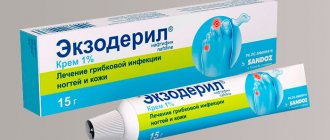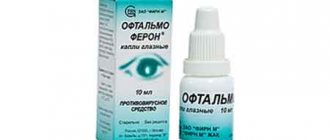pharmachologic effect
Topiramate is a sulfamate/substituted monosaccharide derivative. The anticonvulsant drug Topamax has a complex mechanism of action that is not yet fully understood. It blocks voltage-sensitive sodium and calcium channels in the brain, as well as docking points (receptors) for glutamate. The active ingredient also activates the GABA-A receptor. Therefore, topiramate raises the threshold of stimulation of nerve cells, so that they are so easily excited. This should help against epileptic seizures.
Topamax in the treatment of alcohol dependence
The drug helps to abstain from drinking alcohol, blocks the relaxing and stimulating effects of drinking alcohol. The action is based on enhancing GABAergic transmission, blocking the action of glutamate in the corticomesolimbic system. The therapeutic effect is expressed in the normalization of the central nervous system, a decrease in the manifestations of alcohol intoxication that are pleasant for the patient, and a weakening of the physiological and psychological craving for drinking alcohol.
The effectiveness of Topamax in the treatment of alcoholism has been confirmed by double-blind studies conducted in the USA. Their results showed that 15% of patients taking the drug completely stopped drinking alcohol. For half of the patients, the volume of alcohol consumption, the duration of binge drinking, and the frequency of episodes of alcoholism are halved.
Side effects
The most common side symptoms from the use of Topamax tablets were: weight loss, loss of appetite, intellectual inhibition, depression, speech disorder, insomnia, impaired coordination, distraction, dizziness, taste distortion, decreased sensitivity to irritants, lethargy, memory impairment, tremor eye, paresthesia, drowsiness, tremor, double vision, blurred vision, diarrhea, nausea, fatigue, irritability.
Less frequently, patients experienced the following negative reactions: decreased white blood cell count, decreased platelet count, enlarged lymph nodes, increased eosinophil count, increased appetite, polydipsia, sleep disorder, decreased libido, anxiety, crying, stuttering, euphoria, paranoia, persistence, panic attack , decreased level of consciousness, clumsiness, writing impairment, lack of speech, peripheral neuropathy, abnormal sensation in the eyes, dry eyes, sinus bradycardia, increased heart rate, orthostatic hypotension, flushing, sudden onset of hot flashes, inflammation of the pancreas, bloating, gastritis, pain in lower abdomen, flu-like illness, lethargy, peripheral cold, feeling of intoxication.
Indications for use
Epilepsy
Topamax is indicated for adults and children aged 2 years and older:
- as monotherapy in patients with newly diagnosed epilepsy
- for transition to monotherapy in patients with epilepsy
- as adjunctive therapy for partial seizures, generalized tonic-clonic seizures, or seizures associated with Lennox-Gastaut syndrome.
Migraine
Topamax is indicated for use in adults to prevent the onset of migraine syndrome. The usefulness of Topamax in the acute treatment of migraine has not been studied.
Interaction of Topamax with other medications
The anticonvulsant medications phenytoin and carbamazepine reduce the saturation of topiramate in the blood and its effect. On the other hand, topiramate increases the blood concentration and effects of phenytoin.
When using digoxin (a cardiac glycoside) with topiramate, a slight decrease in blood concentration is observed, but this may not be significant for the patient.
Topiramate also reduces the concentration of ethinyl estradiol in the blood (in oral contraceptives "pill"). It is possible that the preventive effect will be reduced. Additional contraception should be used as a precaution.
Hydrochlorothiazide (for water removal) increases the concentration of topiramate in the blood and increases its effectiveness. The combination of hydrochlorothiazide and topiramate reduces plasma potassium saturation more than hydrochlorothiazide alone. This may make patients more sensitive to cardiac glycosides.
Topiramate has different effects on oral antidiabetic drugs (“sugar pills”). Metformin increases the concentration and effect in the blood, but in turn reduces the concentration and effect of topiramate in the blood. Pioglitazone, on the other hand, reduces the blood concentration and effects of topiramate.
Some medications combined with topiramate increase the risk of kidney stones. These include acetazolamide (anti-glaucoma), triamterene (water excreting), zonisamide (anti-epileptic) and vitamin C in large quantities.
The side effects of carbonic anhydrase inhibitors (antiglaucoma drugs), as well as sultiam or zonisamide, may be increased when taken simultaneously with topiramide.
When interacting with alcohol and other tired active ingredients, the decrease in reactivity and alertness caused by topiramate may be increased.
Topiramate also accelerates or delays the breakdown of the active substances amitriptyline (antidepressant), haloperidol (psychopharmaceutical) and propranolol (beta blockers). Propranolol also slightly increases the concentration of topiramate. The effects of these reactions have not yet been demonstrated.
Topiramate inhibits the enzyme carbonic anhydrase, which regulates sweating. If the active ingredient is taken together with other substances that inhibit carbonic anhydrase (for example, the antiepileptic drug zonisamide or sulthiam), the body can easily overheat.
Pharmacokinetics
The pharmacokinetic profile of topiramate, compared to other antiepileptic drugs, has a long half-life; its pharmacokinetics are linear; excreted primarily through the kidneys; not strongly protein bound; their active metabolites are not clinically important.
Topiramate is not a strong stimulator of drug metabolism enzymes; Absorption is not affected by nutrients (can be taken without regard to meal times), and plasma levels of topiramate do not need to be regularly monitored. There was no relationship between plasma concentrations and efficacy or side effects in clinical trials.
Application and dosage
Taking Topamax tablets is not tied to the time of eating.
Monotherapy for epilepsy:
Adults are given 25 mg of topiramate once in the evening at the start of treatment in the first week. Lower dose film-coated tablets are available for this purpose. The doctor will then increase the topiramate dose by 25-50 mg/day every 1-2 weeks. This dosage is divided into two separate doses. The desired therapeutic success is achieved on average with 100 milligrams of topiramate per day. The maximum recommended daily dose is 500 mg of topiramate. Higher dose medications are available for these procedures.
In children over two years of age, treatment should be carried out in the first week. It is necessary to start with disposable 0.5-1 milligrams of topiramate / kg of body weight in the evening. The doctor will then increase the dose by 0.5 to 1 milligram/kg of body weight per day every 1 to 2 weeks. This dosage should then be used in two separate doses. A seizure-free state is usually achieved with 3-6 milligrams of topiramate/kg body weight/day.
Combination therapy
Adults are given 25 to 50 mg of topiramate once in the evening at the start of treatment in the first week. The doctor will then increase the topiramate dose by 25-50 mg/day every 1-2 weeks. This dosage is then divided into two separate doses. A single dose is also possible for some patients. The usual long-term daily dose for adults is between adjunctive therapy of 200 and 400 mg topiramate/day, divided into two separate doses.
For children two years of age and older, the recommended dose is 5 to 9 milligrams of topiramate/kilogram of body weight/day, divided into two doses. In the first week, treatment should begin with one 25 mg topiramate in the evening (or less, depending on the medical opinion). The dose is then increased every one to two weeks by approximately 1 milligram/kg body weight/day, divided into two single doses.
Dosing for prophylactic treatment of migraine
The recommended total daily dose of Topamax as treatment for patients 12 years of age and older for the prophylactic treatment of migraine is 100 mg/day, administered in two divided doses.
Compound
1 capsule of Topamax contains 50, 25 or 15 mg of topiramate .
Additional substances: granulated sugar ( sucrose, starch syrup), povidone, cellulose acetate.
Capsule shell composition: water, gelatin, sorbitan laurate, sodium lauryl sulfate, titanium dioxide, Opacode Black ink (black iron oxide , glaze solution in ethyl alcohol, isopropyl alcohol, butyl alcohol, propylene glycol, ammonium hydroxide ).
Overdose
Signs and symptoms of drug toxicity included seizures, drowsiness, speech disturbances, blurred vision, diplopia, impaired thinking, lethargy, incoordination, stupor, hypotension, abdominal pain, agitation, dizziness, and depression.
In case of overdose, tablets should be discontinued and general supportive treatment administered until clinical toxicity is reduced or resolved. Hemodialysis is an effective means of removing topiramate from the body.
Contraindications
Absolute:
- age up to 2 years;
- lactation period;
- individual intolerance to the components of the drug.
Relative (diseases/conditions for which Topamax should be used with caution):
- renal/liver failure;
- hypercalciuria;
- nephrourolithiasis (including indications in the past and family history);
- pregnancy (the safety profile for this group of patients has not been studied; since there is an increased likelihood of congenital malformations in the fetus, the appointment of Topamax is possible only in cases where the benefit exceeds the possible risk and it is impossible to carry out alternative treatment).
special instructions
Some patients may have an increased frequency of seizures with topiramate or may experience new types of seizures.
Adequate hydration is very important when using Topamax and may reduce the risk of developing nephrolithiasis.
Oligohidrosis (decreased sweating) has been reported with the use of this medication.
Some patients may lose weight while on medication. For this reason, patients should be monitored for weight loss. If the patient loses weight during treatment, increasing the amount of nutrients taken or introducing nutritional supplements may be considered.
Analogs
Level 4 ATC code matches:
Gabagamma
Neurontin
Pagluferal
Algerica
Topiramate
Convalis
Lamotrigine
Lamictal
Gabapentin
Keppra
Pregabalin Richter
Tebantin
Analogues of Topamax: Topileks, Topiramin, Toprakar, Epiramat, Epiramat-Teva .
Reviews and recommendations from doctors and patients
Doctors are increasingly prescribing Topamax as an additional anticonvulsant drug. It is noted to be well tolerated and low toxicity.
Patients generally also do not complain about the medicine. The only disadvantage is the high frequency of side symptoms. They also note the possibility of using pills for the purpose of losing weight, but in this case they emphasize that you should definitely consult a doctor, since the medication is highly toxic.
Topamax price, where to buy
On the territory of the Russian Federation, the price of Topamax 50 mg is 1426-1641 rubles, and the price of Topamax 25 mg is 2046-2506 rubles. You can buy Topamax in dosages of 50 and 25 mg in Ukraine for 421 and 287 rubles, respectively.
- Online pharmacies in RussiaRussia
- Online pharmacies in UkraineUkraine
- Online pharmacies in KazakhstanKazakhstan
LuxPharma* special offer
- Topamax tablets 25 mg 60 pcs
1430 rub. order - Topamax tablets 50mg 60pcs
RUB 2190 order
Pharmacy Dialogue
- Topamax (caps. 25 mg No. 60)Janssen/Biocom
RUB 877 order
- Topamax (caps. 50 mg No. 60)Janssen Pharmaceutica
1101 rub. order
- Topamax (caps. 25 mg No. 60) Janssen-Ortho/Janssen-Cilag
780 rub. order
- Topamax (caps. 50 mg No. 60)Janssen/Biocom
RUB 1,096 order
- Topamax (caps. 25 mg No. 60)Janssen Pharmaceutica
RUB 805 order
show more
Pharmacy24
- Topamax 50 mg N28 capsules Janssen-Silag S.p.A., Italy/Janssen Ortho LLC, USA
459 UAH.order - Topamax 25 mg No. 28 capsules Janssen-Silag S.p.A., Italy/Janssen Ortho LLC, USA
303 UAH. order
PaniPharmacy
- Topamax capsule Topamax capsule. 25 mg No. 28 Italy, Janssen-Cilag
306 UAH. order
- Topamax capsule Topamax capsule. 50 mg No. 28 Italy, Janssen-Cilag
472 UAH. order
show more
Impact on the ability to drive vehicles and operate machinery
Topamax has a slight to moderate effect on the ability to drive and use a vehicle. Topiramate acts on the central nervous system and may cause drowsiness, dizziness, or other related symptoms. It may also cause visual disturbances and/or blurred vision. These adverse reactions can be potentially dangerous for patients operating a vehicle or operating equipment, especially until the patient's individual experience with the drugs has been established.







